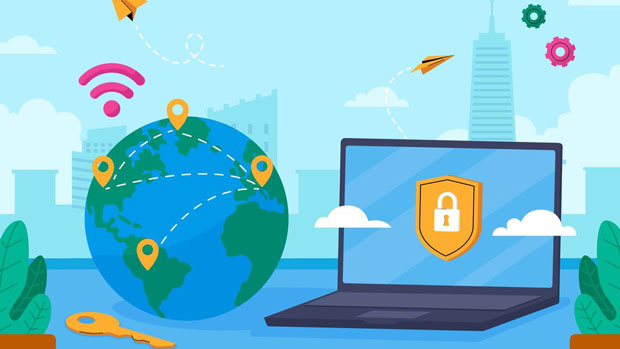When it comes to online privacy and performance, static ISP proxies are a popular choice. These proxies allow users to maintain a consistent IP address over time, making them useful for a variety of tasks, from web scraping to secure browsing. However, one of the most common concerns among users is whether static ISP proxies will drop connections after long-term use. The answer isn't straightforward, as various factors come into play, including the quality of the proxy service, network stability, and the type of tasks being performed. This article delves into the reasons behind potential disconnections, and provides insights on how to maintain stable connections with static ISP proxies. What are Static ISP Proxies?Static ISP proxies are a type of proxy that provides a permanent IP address, unlike dynamic proxies that change the IP with each new connection. These proxies are often provided by Internet Service Providers (ISPs) and are generally associated with a higher level of stability, as they are less likely to be blacklisted compared to residential proxies. The consistent nature of static ISP proxies makes them ideal for long-term tasks where session continuity is important, such as managing multiple social media accounts or conducting research over extended periods.Factors That Can Cause Static ISP Proxies to Drop ConnectionsWhile static ISP proxies are generally considered reliable, there are several factors that could lead to disconnections or drops in connection over time. These include:1. Network Instability Static ISP proxies are dependent on the ISP’s infrastructure, and if the provider experiences network congestion or disruptions, the proxy connection can drop. Network instability can be caused by poor routing, physical issues with cables, or overloads during peak traffic hours. If you are using static ISP proxies for long periods, it's essential to monitor the performance regularly and ensure that the network is stable.2. Proxy Service Limitations Even though static ISP proxies are designed to offer a stable IP, some providers impose time limits or bandwidth restrictions. If you exceed these limits, your connection might be dropped. Some proxy services may also have a policy of disconnecting users after a certain amount of idle time, even with static IPs, to prevent abuse or unauthorized usage. Therefore, always ensure that the provider offers transparent terms of service, so you're not surprised by sudden disconnections.3. Overuse of the Proxy Another common reason for connection drops is overusing a proxy for excessive traffic. When too many requests are made in a short time, or if the proxy is used to scrape websites continuously, the ISP or the proxy provider might flag the activity as suspicious. In such cases, the IP address can be temporarily or permanently banned, leading to dropped connections. Long-term usage without proper management of requests may also trigger throttling or disconnects.4. Hardware or Software Issues Hardware malfunctions, such as a router malfunctioning, or software conflicts within your device, can also contribute to connection drops. For example, if your device is configured to automatically switch between multiple networks (such as 4G, Wi-Fi, or Ethernet), it could unintentionally drop the connection to the static ISP Proxy. Similarly, firewall settings, VPN conflicts, or issues with the proxy configuration can cause interruptions in service.Best Practices to Ensure Stable ConnectionsTo avoid disconnections while using static ISP proxies, several best practices can be followed to enhance stability and performance.1. Choose a Reliable Proxy Provider Selecting a high-quality static ISP proxy provider with a good track record of network reliability is essential. Look for providers that offer dedicated support, have redundant networks, and ensure that their infrastructure can handle long-term, high-demand tasks. A reputable provider should also offer options to monitor your connection performance in real-time.2. Use Connection Monitoring Tools Implementing connection monitoring tools can help you track the performance of your proxy connection over time. These tools can alert you to any dips in performance or potential issues, enabling you to address them before they lead to a disconnection. Many proxy providers also offer monitoring features as part of their service, allowing you to detect any interruptions in service promptly.3. Limit Excessive Traffic To avoid overloading the proxy, it’s essential to manage the amount of traffic sent through it. This means avoiding tasks that could cause excessive requests in a short time, such as scraping too many pages too quickly. If you need to perform such activities, consider spreading them over a longer time frame to reduce the load on the proxy and prevent disconnections.4. Optimize Proxy Settings Properly configuring your proxy settings is critical for long-term usage. For instance, using a proxy rotation system (even if using static IPs) can help distribute the load evenly, reducing the risk of dropping connections due to high traffic on a single IP. Additionally, ensure that your proxy settings are compatible with the software or tools you're using.5. Stay Within Service Limits Always be aware of your proxy provider's usage limits, whether they pertain to bandwidth, requests per minute, or session duration. If your provider has specific limitations, respect them to ensure stable connectivity. Some providers may allow you to upgrade your plan for better service with fewer restrictions.Potential Alternatives to Static ISP Proxies for Long-Term UseWhile static ISP proxies are often a good choice, other types of proxies and solutions may better suit long-term use, especially for high-demand applications. Consider the following alternatives:1. Residential Proxies Unlike static ISP proxies, residential proxies offer IP addresses assigned by Internet Service Providers to residential homes. They tend to be less likely to be blacklisted, and many residential proxy services allow for long-term usage without causing connection drops. However, they can be more expensive compared to static ISP proxies.2. datacenter proxies Datacenter proxies are often faster and more cost-effective, but they come with the risk of being easily detected or banned, especially if overused. They might not be ideal for tasks that require a long and stable connection. However, with proper management, they can serve as a good alternative for non-sensitive tasks.3. VPN Connections For individuals seeking privacy and stability, a VPN connection can be a good alternative. Many VPN providers offer dedicated IP addresses, allowing users to maintain the same IP for extended periods. However, VPNs can sometimes introduce latency, making them less suitable for high-performance tasks.In conclusion, while static ISP proxies are generally reliable for long-term use, various factors can lead to connection drops, such as network instability, provider limitations, or overuse. By selecting a reputable provider, monitoring connection performance, and managing proxy usage effectively, users can mitigate these risks and ensure a stable connection. Furthermore, for users with specific needs, alternative solutions like residential proxies, datacenter proxies, or VPNs may offer additional stability and flexibility. Proper management and awareness of the limitations of your proxy service are key to maintaining long-term connection stability and performance.
Aug 15, 2025






















































